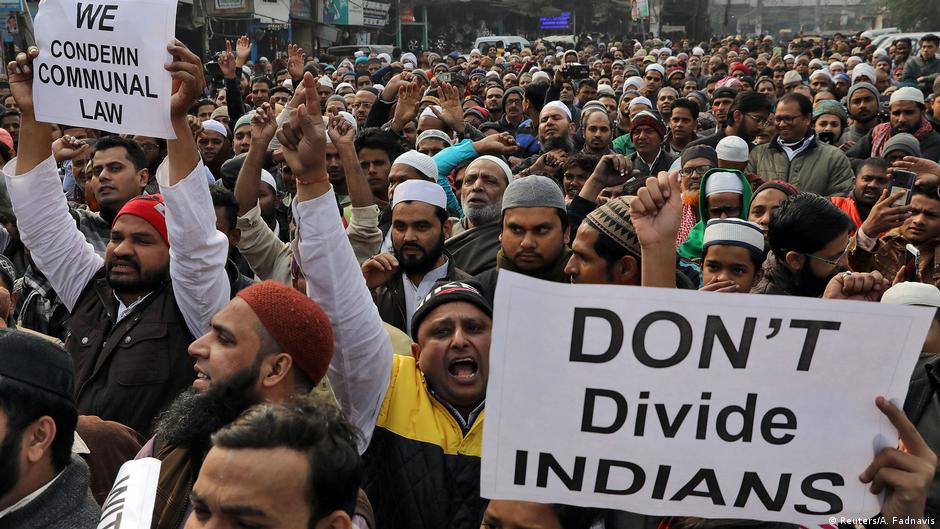In a recent statement, former Reserve Bank of India Governor Raghuram Rajan warned that an “anti-minority” image could harm India’s growth prospects due to reduced demand for Indian products in the global market. Rajan’s comment came a day after Bharatiya Janata Party (BJP)-controlled North Delhi Municipal Corporation abruptly demolished properties, most of them owned by Muslims, in Jahangirpuri on the pretext of illegal construction. It has, however, been widely perceived as ‘collective punishment’ against Muslims after communal clashes in the neighbourhood days ago.
Over the past couple of years, several observers have noted increasing religious majoritarianism and polarisation in India, coinciding with the rise of the Hindu Nationalist BJP in 2014. In the last couple of weeks, the headlines have been occupied with the Hijab row and Halal row in Karnataka and communal violence across several states instigated by religious processions, bulldozing of properties owned by Muslims, and so on. It is well-documented that religious conflicts positively correlate with BJP’s electoral performance.
Several well-meaning people, like Dr Rajan, have argued that the rising religious majoritarianism will harm India’s growth prospects. There could be two kinds of motivations behind such reasoning. First, it could be the case that they firmly believe in the argument. Second, they are internally dubious about the intellectual robustness of their claim but see these arguments as doing their bit to mitigate the rising hatred.
Assuming the case to be the former, there are no strong reasons to believe that there is any threat to overall economic growth. The current form of religious majoritarianism is insidious in that it is based on everyday humiliation and targeting of minorities, mainly Muslims, as opposed to widespread, large-scale violence. Hence, there is no significant risk for companies to operate from a safety and stability perspective as of yet. While some may engage in virtue signalling, they will continue to do business as long as it is profitable — irrespective of India’s “treatment of minorities” — just as they operate in countries like China and Saudi Arabia with the worst record on human rights.
It was somewhat of a coincidence that the Modi government has proven incompetent in handling the economy, particularly during its first term. The consequentialist arguments about threats to growth failed to mobilise voters amid the worst economic decision-making, such as demonetisation and poorly executed Goods and Service Tax (GST). Such blunders are not necessarily a given. The government may be able to clean up its act on the economy and deliver reasonable growth; it seems to be on the right path. As economic growth picks up, these arguments become even weaker.
India recently signed a free trade deal with Australia and is eyeing one with Europe. The country almost doubled the number of unicorns in just ten months in 2021, from 37 to 71. The latest IMF projections also suggest a healthy growth of 8.2% for this fiscal year. In addition, the government has made bold progress on long-awaited issues such as the sale of Air India. Most importantly, it has not embarked on economically foolish misadventures like demonetisation.
India is also a key partner for the US to counter China. The cooperation between the two countries is set to continue becoming more robust, with positive economic prospects for India. This is also why comparisons with Western boycotts of Russian business are not reasonable. Besides, the Indian diaspora in the west — a large proportion of which are hardcore Modi supporters — will countervail such tendencies if it were to happen at all.
Is this the best India can do? Probably not. A cooperative and peaceful environment would most likely reap higher growth. That is, however, besides the point. Counterfactual thinking does not come to an average voter. So, as long as India can sustain some decent growth, voters are unlikely to make a connection between religious polarisation and lower-than-ideal economic performance. Instead, if anything, proper economic growth could further overshadow and mask the rising religious polarisation in the short-medium run.
This is precisely the flip side of the consequentialist arguments of religious tension being a threat to growth. What happens if and when the government can deliver decent economic growth? Does religious hatred become a non-issue then?
There is no escaping the elephant in the room. The rising religious majoritarianism and polarisation need to be confronted. The opposition parties failed to mobilise voters under the government’s poor economic performance; it is unlikely they can touch on this challenging topic. Ultimately, these issues are better addressed locally through meaningful community and civil society bonds.
A group of Hindus and Muslims in Jahangirpuri took out a “tiranga yatra” to send a message of unity and peace following the violence. These are exactly the kinds of concrete bonds we need and provide a ray of hope amid grim developments.
Fahad Hasin is an associate at IDinsight. He also writes on politics, policy and society. You can access his newsletter and writings in popular media here.
Picture Credits: DW
We publish all articles under a Creative Commons Attribution-NoDerivatives license. This means any news organisation, blog, website, newspaper or newsletter can republish our pieces for free, provided they attribute the original source (OpenAxis).

